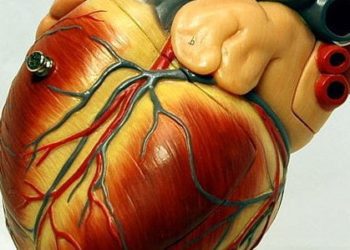Patient transfers to trauma centers often unnecessary
Image: PD
1. Of patients transferred to the level I trauma center, 24% of adult patients and 49% of pediatric patients met criteria for secondary overtriage. Overtriaged patients were mostly likely to have head and neck injuries, followed by skin/soft tissue injuries.
2. Compared to trauma patients who were not overtriaged, overtriaged trauma patients were more likely to have Medicaid, less likely to have Medicare, and more likely to be self-paying.
Evidence Rating Level: 2 (Good)
Study Rundown: A reduction of up to 25% in mortality has been described in severely injured patients who are treated at a level I trauma center. However, preliminary evidence suggests that there is no difference in outcome in patients transferred to a trauma center from another facility. Patients are often transferred to level I trauma centers unnecessarily, which is described as secondary overtriage (SO). This causes overuse of resources at the receiving trauma centers and delays definitive care for these patients. This study describes a secondary overtriage rate of 24% in adult patients and 49% in pediatric patients. Head and neck injuries were most common in overtriaged patients, followed by skin and soft tissue injuries. One weakness of this study was that the reasons for transferring the patients was not reported, nor were the percentage of patients transferred from the transferring facility or the workup done at the transferring facility. Moreover, this study only looked at trauma patients transferred to a single trauma center in a rural setting, so these findings cannot be generalized to other trauma centers in different settings.
Click to read the study in JAMA Surgery
Relevant Reading: The benefit of higher level of care transfer of injured patients from nontertiary hospital emergency departments
In-Depth [retrospective study]: This single center, retrospective study examined 7793 patients at a rural level I trauma center (Dartmouth Hitchcock Medical Center). Of those patients, 4796 were transferred from other facilities. Patients who did not survive to discharge were excluded from this study. Transferred and non-transferred patients had similar age, sex, mean injury severity score (ISS), discharge rate, and mortality. However, transferred patients had higher rates of severe injury (ISS>15) and had longer stays in the ICU and hospital. The criteria for determining SO were patients who had an ISS<15, length of stay less than 48 hours, and who did not require operative intervention.
Of the transferred patients, 24% of adults and 49% of pediatric patients met criteria for SO. SO patients were most likely to have head and neck injuries (56%), skin/soft tissue injuries (41%), and extremity injuries (25%). 36% of SO patients were sent from 5 outside hospitals. All 5 hospitals have general surgeons available, 4 of the 5 have orthopedic coverage, but none had neurosurgery or plastic surgery coverage. Compared to other transferred patients, SO patients were more likely to have Medicaid (10% vs 16%, P<0.001), less likely to have Medicare (35% vs 17%, P<0.001), more likely to have Blue Cross/Blue Shield (20% vs 15%, P=0.01), and more likely to be self-paying (9% vs 7%, P=0.045).
By James Jiang and Allen Ho
More from this author: Drainage for hemopericardium is safe and reduces hospital stay, Adenotonsillectomy improves behavior in childhood obstructive sleep apnea (CHAT Trial), Plasma-Lyte A improves acid-base status in adult trauma patients, Postoperative complications linked with unplanned hospital readmissions
© 2013 2minutemedicine.com. All rights reserved. No works may be reproduced without written consent from 2minutemedicine.com. Disclaimer: We present factual information directly from peer reviewed medical journals. No post should be construed as medical advice and is not intended as such by the authors or by 2minutemedicine.com. PLEASE SEE A HEALTHCARE PROVIDER IN YOUR AREA IF YOU SEEK MEDICAL ADVICE OF ANY SORT. Content is produced in accordance with fair use copyrights solely and strictly for the purpose of teaching, news and criticism. No benefit, monetary or otherwise, is realized by any participants or the owner of this domain.







